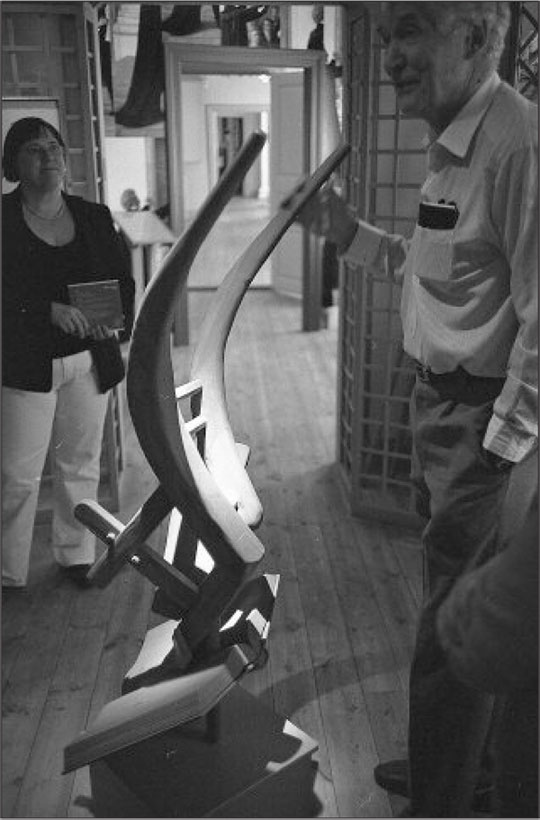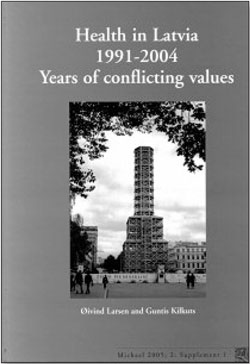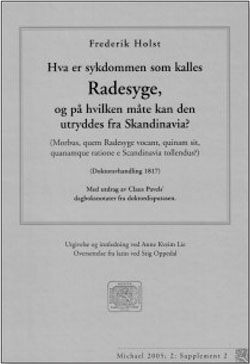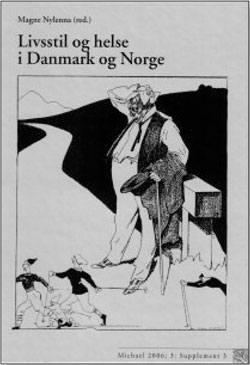Letter to the editor: Academia and research in Boston – Excerpts of a student’s perspective on an American academic institution and its approach to medical research
Michael 2006;3:122–6.
As a current student in a Norwegian medical school I feel that the influence of American medicine in our curriculum is substantial. History shows that the influence shifts. Before The Second World War Central Europe and Germany were the driving forces. These days we hear a lot about the strides made by our fellows Asians, indicating there might be an upcoming shift. I grew interested in trying to understand the American approach and the reasons behind the current American influence in medicine, and left The Norwegian University of Science and Technology (NTNU) and Trondheim in July 2005 to attend a one year Research Fellowship at Harvard Medical School and Children’s Hospital Boston, in Boston, Massachusetts, U.S.A. My interest has always been pediatrics, and in particular the combination of surgery and pediatrics, so I headed for the Department of General Surgery.
The Longwood Medical Area
Children’s Hospital Boston is located in Longwood Medical Area, Boston. Longwood is considered one of the largest medical areas in the world, with numerous renowned institutions. Children’s has about 5000 employees, sizeable to be a pediatric institution, and 1.500 professionals are devoted purely to research. If you take into consideration the rest of the hospitals in the area, and add the pharmaceutical companies, the specialized research institutions and the medical schools around, a rough estimate gives us 60.000 people working specifically with healthcare within 2 square kilometers.
The rather congested area of hospitals and research institutions makes quite an impression, and a few notices should be made. Obviously there are a lot of synergies with this type of concentration; however there is another factor that has left a more interesting impression. In a privately run health care system as the one you have in the America, even though everyone is the other ones’ neighbour, the competition is apparent. One day you could be referring a patient to the neighbouring hospital, the next day you want your patient back. The collaboration and competition is fascinating. The competing environment in such a small area is in stark contrast to the system in Norway. In that sense, to be the only children’s hospital around is a privilege.
Research cannot be generalized; the routines obviously differ greatly from department to department and from person to person, as it does in any part of the world. My focus has been on traumatized children, primarily with liver and spleen injuries and the incidence of complications after ruptures. Furthermore I have looked into alternative ways of grading liver injuries radiographically. I have also worked in basic science projects primarily investigating different medications for lowering blood pressure in hypertensive mice. In other words I have participated in a few different projects, which is a clear strategy at this institution.
The Fellowship program accepts about eight research fellows at any give time and all except me are physicians. A research fellowship lasts for a minimum of one year, usually two. It is a quite common program to attend for physicians who plan on a career in an academic institution. In order to get into certain specific residency programs, like pediatric surgery for instance, it is considered a necessity. I was set to work for Dr. David Mooney, who is Director of The Trauma Program at Children’s, and a very skilled and supportive supervisor. Our group has meetings every Wednesday morning, presenting progress in our research and advising and criticizing each other’s work. In the beginning the sessions took a lot of preparation, and the older wise men and women of the department often asked harsh questions. Eventually it has become a routine and a forum where a lot of obstacles are surpassed.
Publish, publish
One of the first, clear, and frank messages given in this forum was the importance of publishing. As a student and fresh researcher I appreciated the fact that considerations were taken to assure that all younger researchers were not working merely for the benefit of the institution, but also for him or herself. I found this candid attitude interesting; as it is something I have met wherever I have contributed with work this year. I have recognized the focus on «credit for your work» as something my American colleagues discuss openly and consider wisely before they engage in any projects. I am uncertain whether this focus is as outspoken back home.
In comparison to Norway I instantly felt a much stronger focus on securing reportable and valid results, and making sure you had projects to fall back on. Of course, every project conducted in Norway or in the US is focused on result. However, every project I have taken part in this year has led to a publication. This may not sound like a revelation to senior researchers, but as a student back home you often take part in projects or do a lot of work that more than often end up in the drawer. A lot of the projects I refer to that have been published here are comparable to work students do back home. The difference is the initial aim and the focus and help from supervisors. All work, no matter how big or small, is done with a publication as the ultimate goal.
Buzz word
For me research did not give a spark when I started studying. It seemed lonely and routine, and it often is. I have not missed out on the reality of research and for me it is the hypothesis and the results that motivate. However, somehow the word «research» has a very strong position over here, it’s something you want or must do, depending on how you look at it. Most students I meet are involved in some sort of research and are groomed in that direction. Some might argue that this is a phenomenon of top institutions like Harvard, and they may well be right. However I find the comparison just as interesting then. Norway and Norwegian institutions are more comparable to New England and its many top institutions, than to America as a whole which is much more diverse than Norway is. We as Norwegians like to consider ourselves a people of quality in work, success in result and contributors in our world’s progress. In short, we should embrace all that has to do with research. My reference is from a student’s point of view, but I feel we lag behind in embracing the field. I hope to feel the buzz of «research» in the hallways of Norwegian universities in not too many years.
As a student I was concerned with the role I would get in a huge institution like Children’s. Sooner than later, I recognized that I was privileged. Professors and physicians you read about in the literature are all respectful towards the young and I am deeply impressed by the patience and time put down on educating students. And eventually you are treated as any other as you get into your field of research. This is one of the most appreciating notes I have made till this day.

The heart of Longwood Medical Area, the campus of Harvard Medical School. The building in the middle houses the administration of Harvard Medical School. To the left lies the Biotechnology and System Biology building, to the right are the educational premises. The size and architechture reflect the high ambitions. (Photo: K. Kristoffersen 2006)
A normal day for me involves starting up in the lab around seven in the morning; the day is largely my own responsibility, though the hospital usually awakens around six so it is a good time to get started. In order to keep up with what is going on I have to do something as obvious as to check email, I mention it because it has become a crucial part of my communication with colleagues, to a much greater extent than it has been for me back home. I ask myself whether this is good or bad. As I sit in my office listening to my supervisor’s 67th email for the day ticking in; «pling!» I conclude that it’s at least alarming. I usually start up my research work an hour later, and depending on whether I am in the lab working with animals or doing clinical work, I end the day somewhere between eight and nine in the evening. The culture is very much focused on work, and I have eventually got used to having my lunch in front of the computer. Most definitely something I find unfortunate.
An international community
Nevertheless, after one year as a Research Fellow at Children’s Hospital Boston, what leaves the greatest impression is more of an interpersonal character. As we all know America attracts all sorts of people, and so does the research community. The most enjoyable days at work are the ones where you collaborate with colleagues from Russia, Ecuador, China and Sri Lanka, without giving the diversity a second thought. I find the mix fascinating and very educational. This also goes for the medical school, which has a large group of international students. With so many different backgrounds and ways of approaching problems the chance of success is great, and it is undoubtedly a major contributing factor in the productivity and quality of research at this institution.
In that sense I believe a crucial step for creating institutions like the ones you have here in Boston, back home in Norway is to create a similar international template. By that I mean that Norwegian institutions should take active measures so that international scholars more easily can come and work. There are more than enough people who would like to contribute with their skills in a country like Norway, as their own country may not be able to offer the same opportunities. A lot of people would say that this is a long shot; however Europe is getting smaller and Norway either we like it or not will eventually become an integral part of Europe. An obvious factor that we should recognize is America’s great advantage in its language, English, which is largely universal. In a continuously integrating Europe we will soon find ourselves in a situation where Norwegian (!) students and scholars are just as susceptible to work in Frankfurt or Aarhus as in Trondheim or Oslo. Assuming this theory is just, if Norwegian institutions want the same migration of scholars from abroad we have to make our institutions easier to adapt to. We see that institutions all over Europe are building programs in English. This is a feasible and concrete measure that I believe Norwegian institutions would benefit from. We have the quality and technology needed; however our language and geographical location is a challenge. It is our choice if we want to make an effort to minimize this challenge. For students and teachers it will be awkward to base everything on an English template the first ten years, but then it will become natural.
As education becomes an international trade, the Bologna Protocol that most European Universities are adapting to, is merely a beginning, and students and scholars from all over the world start moving around. I believe basing everything on an international template is a crucial move for building successful research institutions.
Edv. Stangs gt. 23
3014 Drammen
Kristian.Kristoffersen@childrens.harvard.edu
kristkr@stud.ntnu.no
University history in context

University museums often have a difficult task in putting academic activities into that proper social context which is necessary for the understanding of the development. In the University Museum in Lund in Sweden items from the surrounding society are representing the outer world for each of the historical periods covered in the exhibitions. Therefore, the leader of the museum, professor Håkan Westling (right) reflects on an old plough together with deputy University director Inger Stray Lien from Oslo (left) amidst the scientific objects displayed. (Photo: Ø. Larsen 2006)



Michael’s supplements
are distributed to the subscribers free of charge. Reports and other manuscripts of good quality within Michael’s field of interest may be considered by the editors for publication as supplements.
Michael is also an effective publication channel for doctoral theses. The work may appear as an ordinary number (see Michael #1, 2005) or as a supplement.
Back numbers of ordinary issues and of supplements may be ordered from the publisher. Please contact astrid@dnms.no.
